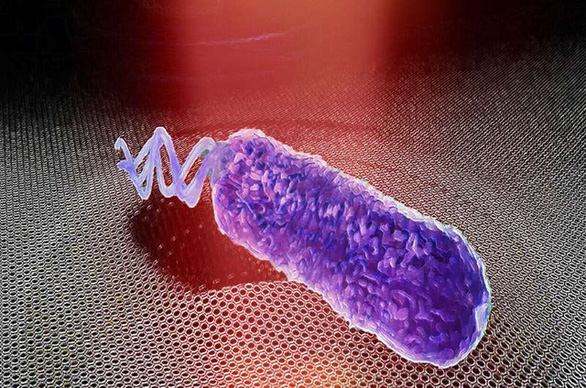New discovery: Bacteria emit sound, only mute when encountering antibiotics

Bacteria have the ability to emit noise – Photo: PHYS.ORG
A team of researchers from Delft University of Technology (the largest public university in the Netherlands), led by Dr Farbod Alijani, has now captured the noise of a bacterium using graphene (a form of bacteria). thinnest and strongest carbon). This study was published in the journal Nature Nanotechnology.
When the bacteria are killed using antibiotics, those sounds stop. Of course, bacteria will “not be silent” when resistant to antibiotics.
Dr. Farbod Alijani’s group initially considered only the mechanical fundamentals of the graphene metamaterial. However, at a certain point, they wondered what would happen if this extremely sensitive material came into contact with a biological object.
Mr. Alijani said: “Graphene is a form of carbon consisting of a single layer of atoms and is also known as a wonder material. It is very strong with good electrical and mechanical properties, and it is also extremely sensitive to chemicals. external force”.
The team began collaborating with the nanobiology group of physicist Cees Dekker and the nanomechanics group of Professor Peter Steeneken, along with Drs Aleksandre Japaridze, Irek Roslonn, to perform their first experiments with bacteria E. coli.
Physicist Cees Dekker said: “What we saw was amazing. When a bacterium adheres to the surface of a piece of graphene, it creates random oscillations with amplitudes as low as a few nanometers that we can We can hear the sound of this bacteria.”
The microscopic oscillations result from the biological processes of the bacteria with the major contribution from their flagella (the tails on the surface of the cell that repel the bacteria).
“To understand how tiny the beats on graphene are, it’s worth mentioning that they’re at least 10 billion times smaller than a boxer’s punch. However, these nano-sized beats can be converted into audible audio tracks,” Alijani said.
This study has great significance in detecting antibiotic resistance.
Experimental results show that if the bacteria are resistant to antibiotics, the fluctuations continue at the same level. When the bacteria are sensitive to the drug, the vibrations decrease until an hour or two later, and then they disappear completely.
Dr. Farbod Alijani said: “In the future, we aim to optimize our single-celled graphene antibiotic-sensitive platform. It could eventually be used as an efficient diagnostic toolkit to rapid detection of antibiotic resistance in clinical practice”.
This will be an invaluable tool in the fight against antibiotic resistance, a growing threat to human health worldwide.
at Blogtuan.info – Source: tuoitre.vn – Read the original article here



